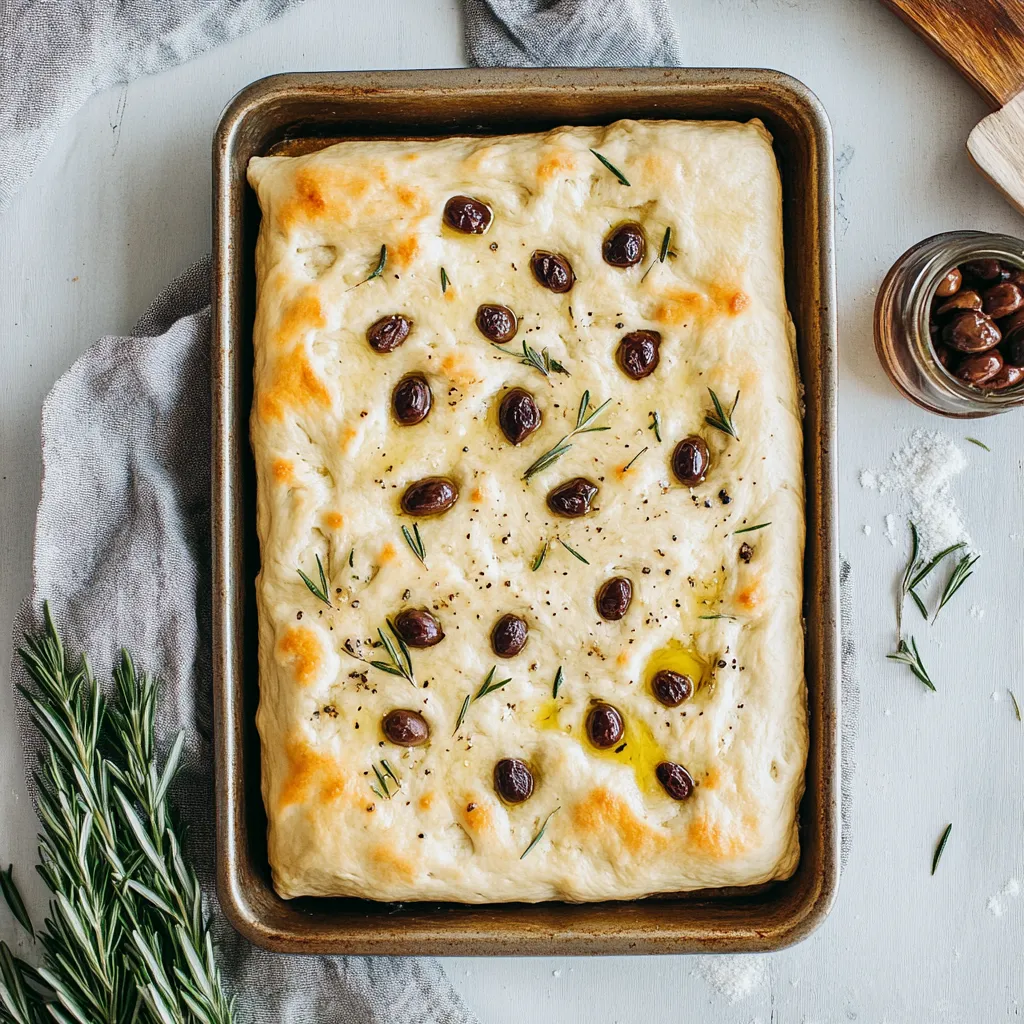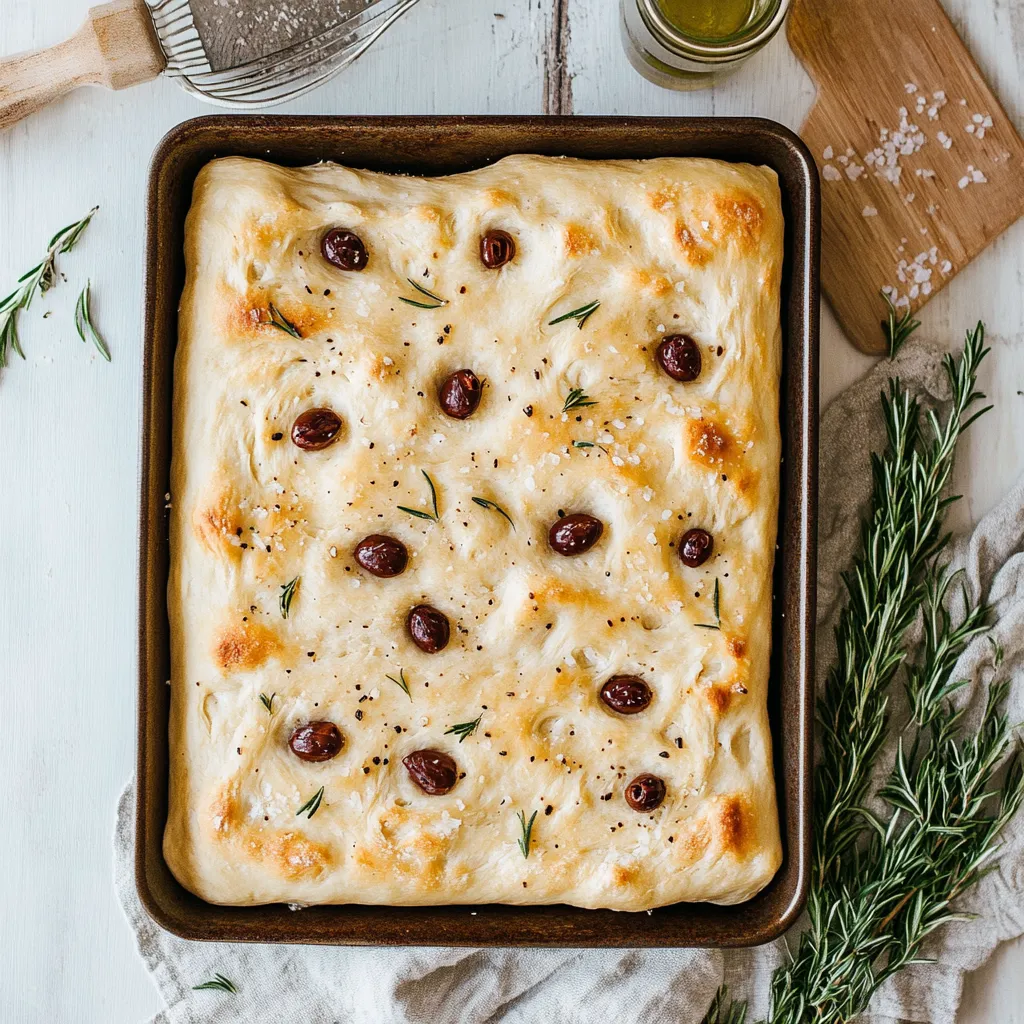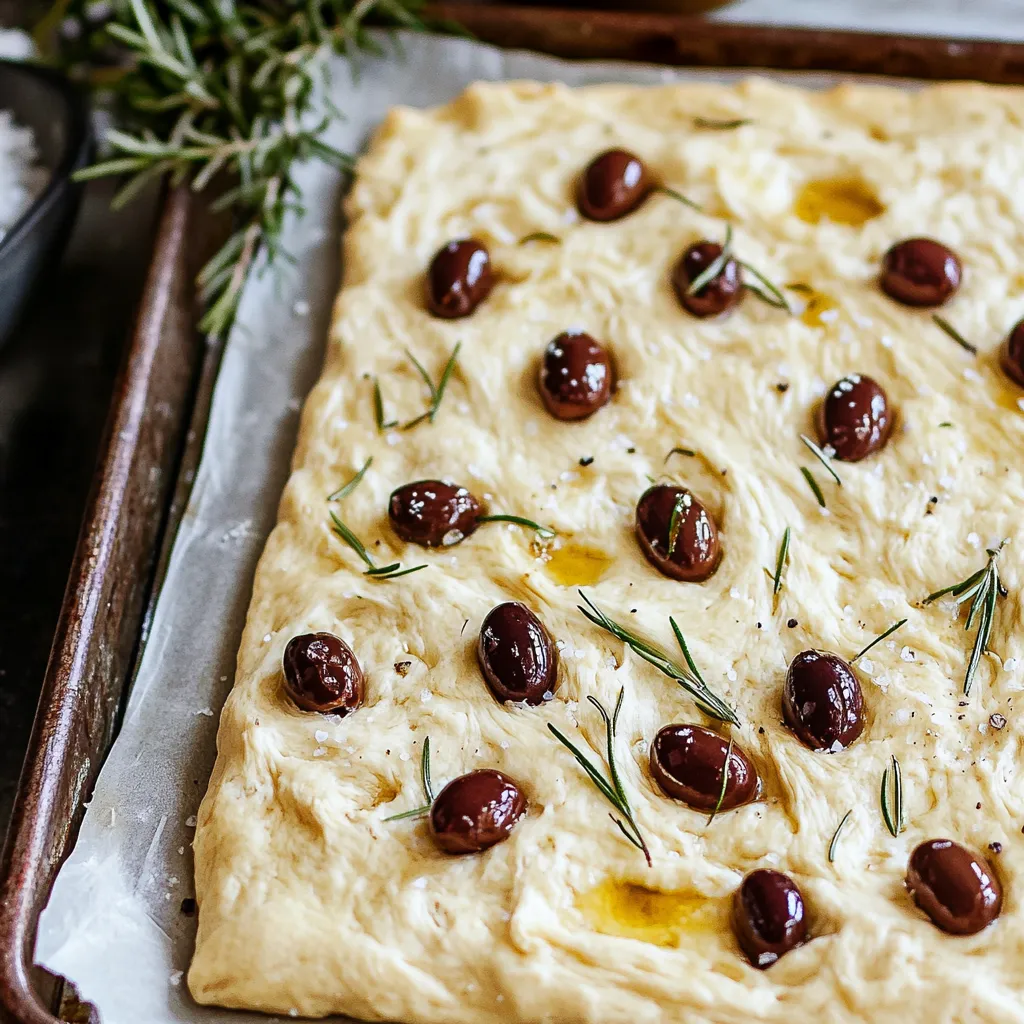 Pin it
Pin it
Sourdough focaccia combines rustic Italian tradition with the complex flavor development of natural fermentation to create an irresistible flatbread experience. This version features a remarkably light interior structure with countless tiny air pockets surrounded by a gloriously crispy exterior that shatters slightly with each bite. The generous use of quality olive oil creates that signature golden crust while infusing the bread with rich flavor. This deceptively simple bread embodies perfect textural contrast—crunchy edges giving way to a pillowy interior that melts in your mouth.
I made this focaccia for a family gathering last summer, serving it alongside a selection of Mediterranean dips. My brother-in-law, who typically avoids bread, took three slices and asked for the recipe before leaving. Even my mother, who claims she can never get sourdough right, succeeded beautifully with this method on her first attempt.
Ingredient Quality Matters
- Flour: Choose bread flour or all-purpose flour with at least 11% protein content for proper structure development. Lower protein flours will produce a denser result with fewer air pockets.
- Water: The approximately 87% hydration creates challenge but rewards with exceptional texture. Use filtered water if your tap water has strong chlorine flavor.
- Sourdough Starter: Your starter should be at peak activity, ideally used 4 to 6 hours after feeding when it has doubled but not yet collapsed for maximum leavening power.
- Olive Oil: Select a high-quality extra virgin olive oil as its flavor will significantly impact the final bread. The oil serves multiple purposes from flavoring to creating the signature crust.
- Salt: Both fine sea salt in the dough and flaky finishing salt on top are essential. The internal salt strengthens gluten and enhances flavor while the flaky topping adds texture and bursts of salinity.
Creating Perfect Texture
- Starter Activation Process:
- Begin by ensuring your sourdough starter is properly fed and active. Mix 25g of existing starter with 50g flour and 50g water, creating a 1:2:2 ratio that promotes vigorous growth. Allow this mixture to develop at room temperature until it has doubled in size and shows abundant bubbles throughout. This typically takes between 4 and 8 hours depending on ambient temperature and starter strength.
- Gentle Dough Development:
- Combine your water and active starter in a large bowl, whisking until the starter is fully dispersed throughout the liquid. Add your flour and salt, mixing initially with a spatula until no dry flour remains. Perform four sets of stretch and folds spaced thirty minutes apart. Each set consists of grasping the dough from underneath, stretching it upward until resistance is felt, then folding it over itself. Rotate the bowl and repeat this process four to five times per set. Over time, the dough gains strength and elasticity.
- Flavor Development Through Cold Fermentation:
- After the final stretch and fold, allow the dough to continue fermenting at room temperature until you notice bubble formation on the surface and a slight increase in volume. Transfer this partially fermented dough to an airtight container and refrigerate overnight or up to 24 hours. This cold fermentation slows yeast activity while allowing beneficial bacteria to continue producing flavor compounds.
- Dimpling Technique Perfection:
- After the dough has completed its second rise in the pan and appears puffy and jiggly, create the signature focaccia texture by pressing your oiled fingertips deeply into the dough. These indentations should nearly reach the bottom of the pan without tearing through the dough. The olive oil pools in these dimples, frying portions of the dough during baking while also creating reservoirs for herbs and toppings to collect.
 Pin it
Pin it
My grandmother taught me that properly made focaccia should have what Italians call 'alveoli'—those beautiful irregular air pockets throughout the crumb. She would hold slices up to the light to inspect them, declaring success only when she could see light passing through the largest holes. Her secret was always allowing ample time for both fermentation stages without rushing the process.
Serving Inspirations
Present your freshly baked focaccia while still slightly warm for maximum textural contrast. Cut into generous squares and arrange on a wooden board alongside small bowls of additional olive oil infused with fresh herbs for dipping. For an elevated appetizer, top warm focaccia with paper-thin prosciutto, fresh arugula, and shaved Parmesan. Create exceptional sandwiches by slicing horizontally and filling with Mediterranean-inspired ingredients like roasted red peppers, fresh mozzarella, and basil.
Proper Storage
Store completely cooled focaccia in a paper bag at room temperature for up to two days to maintain optimal texture. For longer storage, wrap tightly in plastic and freeze for up to one month. Refresh room temperature bread by warming in a 350°F oven for 5 minutes. Frozen focaccia should be thawed at room temperature then reheated for 8 to 10 minutes to restore crispness. Avoid refrigerating focaccia as this accelerates staling. If texture has diminished, transform leftovers into croutons by cutting into cubes and toasting with additional olive oil and herbs.
 Pin it
Pin it
Frequently Asked Questions
- → Can I use commercial yeast instead of sourdough starter?
- This recipe is specifically designed for sourdough, which gives it that distinctive flavor and texture. If you don't have a starter, consider finding a traditional focaccia recipe with commercial yeast instead, as the techniques and timing would need significant adjustments.
- → Why is my focaccia dough so sticky?
- Focaccia dough is naturally wetter and stickier than many bread doughs - this high hydration is what creates those beautiful air pockets. Don't add extra flour; instead, use olive oil on your hands when handling the dough and trust that it will come together during the folding and fermentation process.
- → Can I make this focaccia in a different sized pan?
- Yes! You can adjust to different pans - a smaller pan will yield a thicker focaccia, while a larger one makes a thinner bread. For a round focaccia, use a 10-inch cake pan. Just watch the baking time, as thicker focaccia may need a few extra minutes while thinner ones will bake faster.
- → What other toppings can I use on focaccia?
- Focaccia is incredibly versatile! Try thinly sliced tomatoes, caramelized onions, roasted garlic, sun-dried tomatoes, different herbs like thyme or oregano, or even thinly sliced potato. Just make sure any fresh vegetables aren't too wet, or they might make your focaccia soggy.
- → How do I store leftover focaccia?
- Store cooled focaccia at room temperature, wrapped in a clean kitchen towel or in an airtight container, for up to 2 days. For longer storage, slice and freeze it for up to 3 months. Refresh room temperature focaccia by warming it in a 350°F oven for 5-10 minutes before serving.
